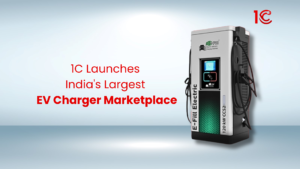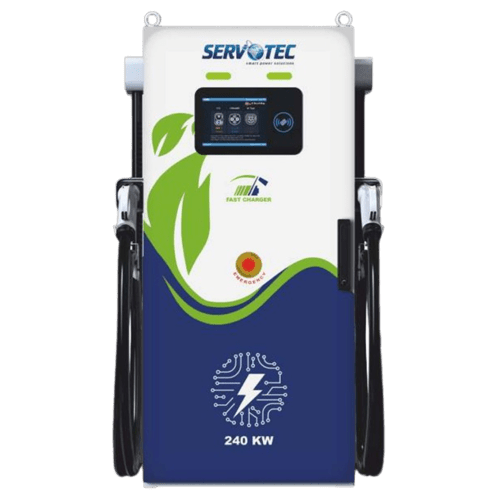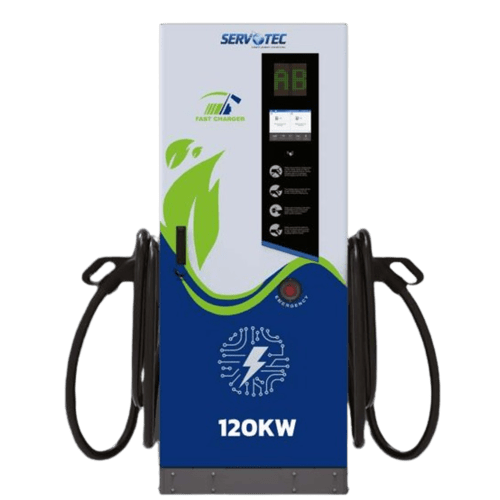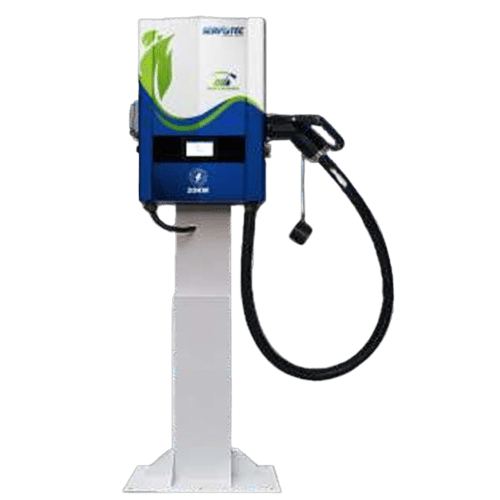
Menu
Menu

An electric vehicle charging station, also known as an EV charging station or EVSE (Electric Vehicle Supply Equipment), is a device that supplies electric energy to recharge electric vehicles. These stations come in various types, including public charging stations found in public spaces, workplaces, and commercial areas, as well as home charging stations installed in residential settings. Additionally, there are specialised stations for battery swapping, allowing for the quick exchange of depleted batteries with fully charged ones.
The various terms associated with EV charging stations are:
An alternating current, or AC, is an electrical current that undergoes periodic changes in magnitude and polarity over time. Unlike direct current or DC, which flows consistently in one direction, AC reverses its direction at regular intervals. This oscillation enables the efficient transmission of electrical energy over long distances and allows for various applications in homes, industries, and power distribution networks.
AC is commonly used in charging EVs through home and public charging stations. The onboard charger within the vehicle converts AC into DC (Direct Current) to charge the battery. AC charging is typically slower than DC fast charging, making it suitable for overnight or extended charging sessions.
DC, or Direct Current, is a type of electric current that flows consistently in one direction. In DC circuits, electrons move from a negative charge area to a positive charge area without changing direction, unlike in alternating current circuits, where the current reverses direction periodically.
Direct Current is used in charging electric vehicles because it allows for faster charging by delivering power directly to the battery without needing conversion from Alternating Current. This efficiency makes DC charging ideal for quick top-ups, especially at public charging stations.

Batteries are charged with DC power. Electric vehicles incorporate a small AC-to-DC converter for charging from AC power supplied by the grid. The charging cable delivers AC power from the grid, which the vehicle converts internally to DC for battery charging. Most EVs have built-in converters supporting charging speeds up to 6–7 kW, suitable for overnight charging. This process is called “AC charging”. However, for rapid recharging, much higher power (50–100+ kW) is required. Integrating such a large AC-to-DC converter into the vehicle is impractical. Therefore, in DC fast charging, the AC-to-DC conversion is handled by the charging station, supplying DC power directly to the vehicle, bypassing the built-in converter.

EV charging connectors are essential components that enable the transfer of electric power from the charging infrastructure to the vehicle’s battery system. There are several types of connectors used for EV charging, each with its specifications and compatibility. Here are the main types:
Combined Charging System (CCS): CCS connectors integrate Type 1 or Type 2 connectors with additional DC pins for high-speed DC charging. This allows for faster charging rates compared to AC charging. CCS connectors are becoming increasingly popular, especially for fast charging stations.

Charging levels for electric vehicles are categorized into different levels:
The time required to charge an electric vehicle depends on factors like battery capacity, power density, and charging power. Think of the battery’s capacity as its size, power density as the ability to accept charge quickly, and charging power as the rate of energy supplied. A larger capacity is like a bigger fuel tank, higher power density allows quicker charging, and more charging power is akin to a faster pump flow. However, fast charging can strain the electricity grid.
To calculate charging time, you divide the battery capacity (kWh) by the charging power (kW). It’s essential to note that effective charging power may be lower due to battery limitations, management system constraints, charging losses, and changing restrictions set by a charge controller.
In the early days of electric vehicles, such as the original Nissan Leaf, the battery capacity was typically around 20 kilowatt-hours (kWh), which provides a range of roughly 100 miles (160 km). Tesla advanced the technology with longer-range vehicles like the Model S, which offered battery capacities ranging from 40 kWh to 85 kWh. The larger capacity of 85 kWh allowed for a range of about 300 miles (480 km). Modern plug-in hybrid vehicles usually provide electric ranges between 15 to 60 miles, depending on their battery size and efficiency.
There are mainly two types of charging based on personalisation, that are stations. Another type is battery swapping which is different from the two.
Public EV charging stations are essential for longer trips and EV owners without home charging access, common in multi-family housing. Costs vary and may be based on time or energy usage. These stations leverage existing infrastructure and come in various forms, from simple roadside posts to automated setups. As of May 2023, the US has over 138,100 public EV charging outlets, supporting widespread EV adoption and enabling convenient charging on the go.
Home EV charging is the primary method for over 80% of EV owners, typically done in the garage. In North America, Level 1 charging uses a standard 120-volt outlet and provides less than 5 miles of range per hour. To meet the demand for faster charging, Level 2 stations have become popular, operating at 240 volts and delivering up to 30+ miles of range per hour. These chargers offer a practical solution, especially for those with higher daily mileage needs. Installation methods include hardwired connections to the electrical panel or using a cord and plug connected to a 240-volt receptacle like the NEMA 14-50, supporting charging at up to 9.6 kilowatts for a faster and more efficient experience.
Battery swapping stations offer a rapid solution for recharging electric vehicles by exchanging depleted batteries for fully charged ones. This automated process takes just minutes, providing convenience and reducing charging time significantly. It addresses range anxiety and offers a reliable option for long-distance travel.
Various companies are providing EV charging station franchises in India. Some of them are:
Read More About the Franchise in Detail: Top 10 EV Charging Station Franchise Providers in India
Share the article:
Looking to set up an EV charging station? Schedule a call with our experts today.
Follow us for more such content!






© 2024 Massive Mobility Private Limited. All rights Reserved